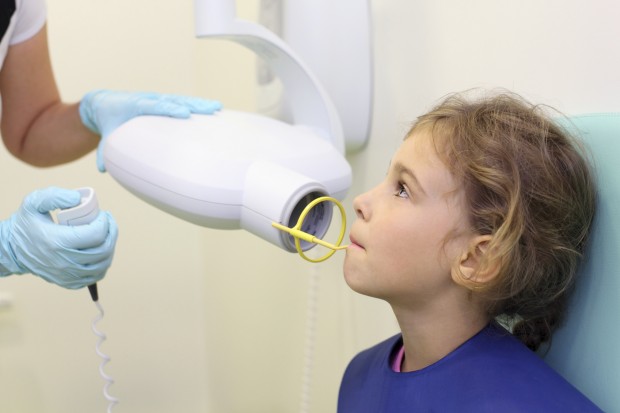
Diagnosing Your Teeth: Intraoral and Extraoral X-Rays
- 28 Jun 2016
- 0
- Oral Hygiene and Prevention
Dentists use their professional judgment to determine which type of dental X-rays a patient needs: intraoral or extraoral X-rays.
Intraoral X-Rays
Intraoral X-rays, taken inside of the mouth, are the most common. There are two types of intraoral X-rays: periapical and the bite-wing. These are very important for careful diagnosis.
Periapical (“around the apex” or “around the tooth root”) X-rays allow for a view of the entire tooth, from the crown to the tooth root and the surrounding bone structure. This view of the tooth will help the doctor to diagnose tooth fractures, tooth infections in the bone, bone loss around the tooth, periodontal (gum) health, tooth decay on the root surface (root decay), the status of the tooth pulp or nerve, or to monitor the developing teeth in children.
Bite-wing X-rays (named for the mount that you “bite” into when it is taken) allow for a very good view of the coronal (visible) parts of upper and lower posterior (back) teeth. The bite-wing view helps the dentist to determine the presence of tooth decay or the status of dental restorations.

Extraoral X-rays provide a panoramic view of the mouth and teeth.
Extraoral X-Rays
Extraoral X-rays are taken outside of the mouth and include a panoramic view. This view allows a dentist to survey the entire dentition and other important structures of the oral anatomy. This technique is ideal for a patient’s first X-ray or if she has not been seen by a dentist lately. However, the panoramic view does not have the resolution needed to diagnose smaller problems like small dental caries (tooth decay). Individual intraoral X-rays may be requested after reviewing the panoramic X-ray.
Intraoral and extraoral X-rays might be taken together in one visit, or done separately. The two dental X-rays allow the dentist to see different angles of the tooth. They also complement each other when it comes to diagnosing any oral disease.